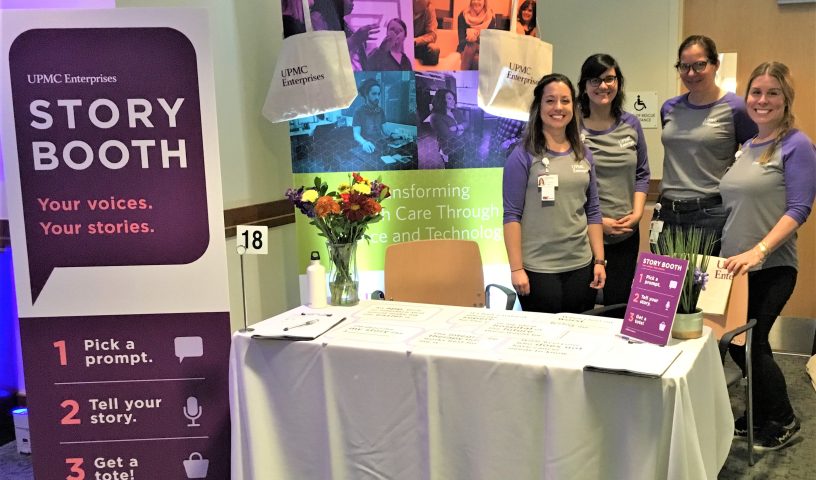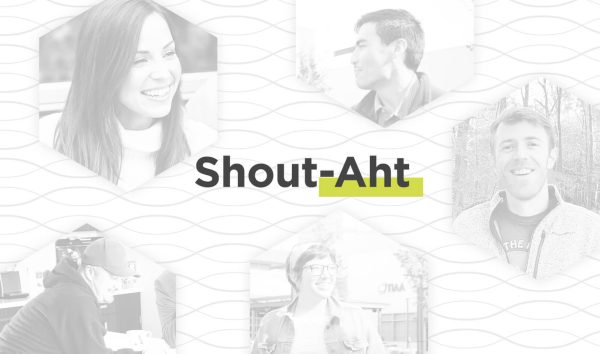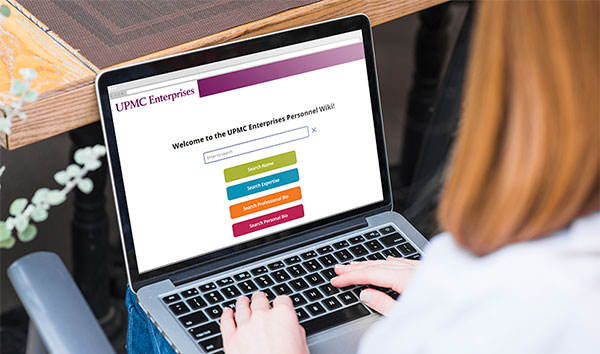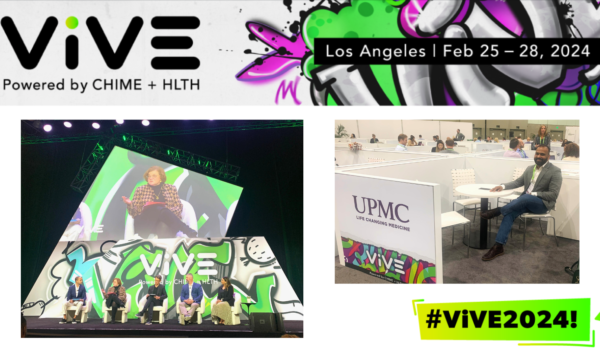Access to the health care ecosystem at UPMC helps designers step into the shoes of their end users.
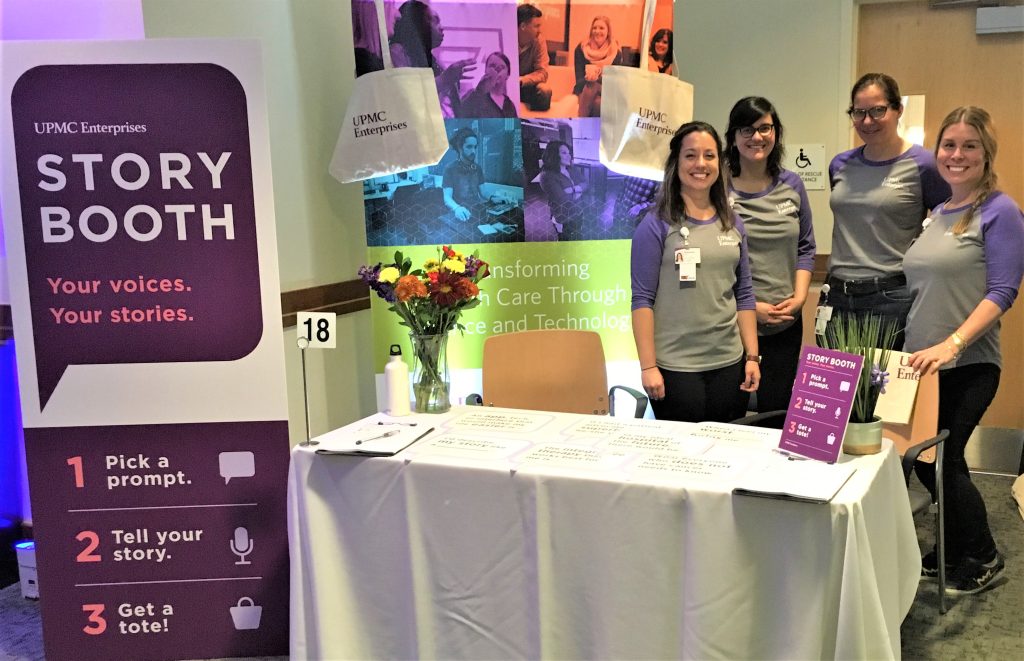
On September 25, the UPMC Enterprises team interviewed oncology patients at UPMC Hillman Cancer Center’s Annual Integrative Oncology Wellness Fair. Enterprises set up a booth that prompted patients to share their experiences by asking them to finish statements, such as, “In my ideal hospital of the future, there would be …” or “An app, tech, or interface that would make my life easier is …”
The objectives of the UPMC Enterprises Storybooth were therapeutic and strategic: give patients a platform to share their stories and collect the experiences and needs of oncology patients.
The Storybooth initiative is an example of a Human Centered Design (HCD) method that allows designers to surface the needs and desires of end users – in this case, oncology patients, caregivers, and staff. HCD methods are employed by designers working in many sub-disciplines of the field, such as User Experience (UX) design, which typically deals with the creation of digital software.
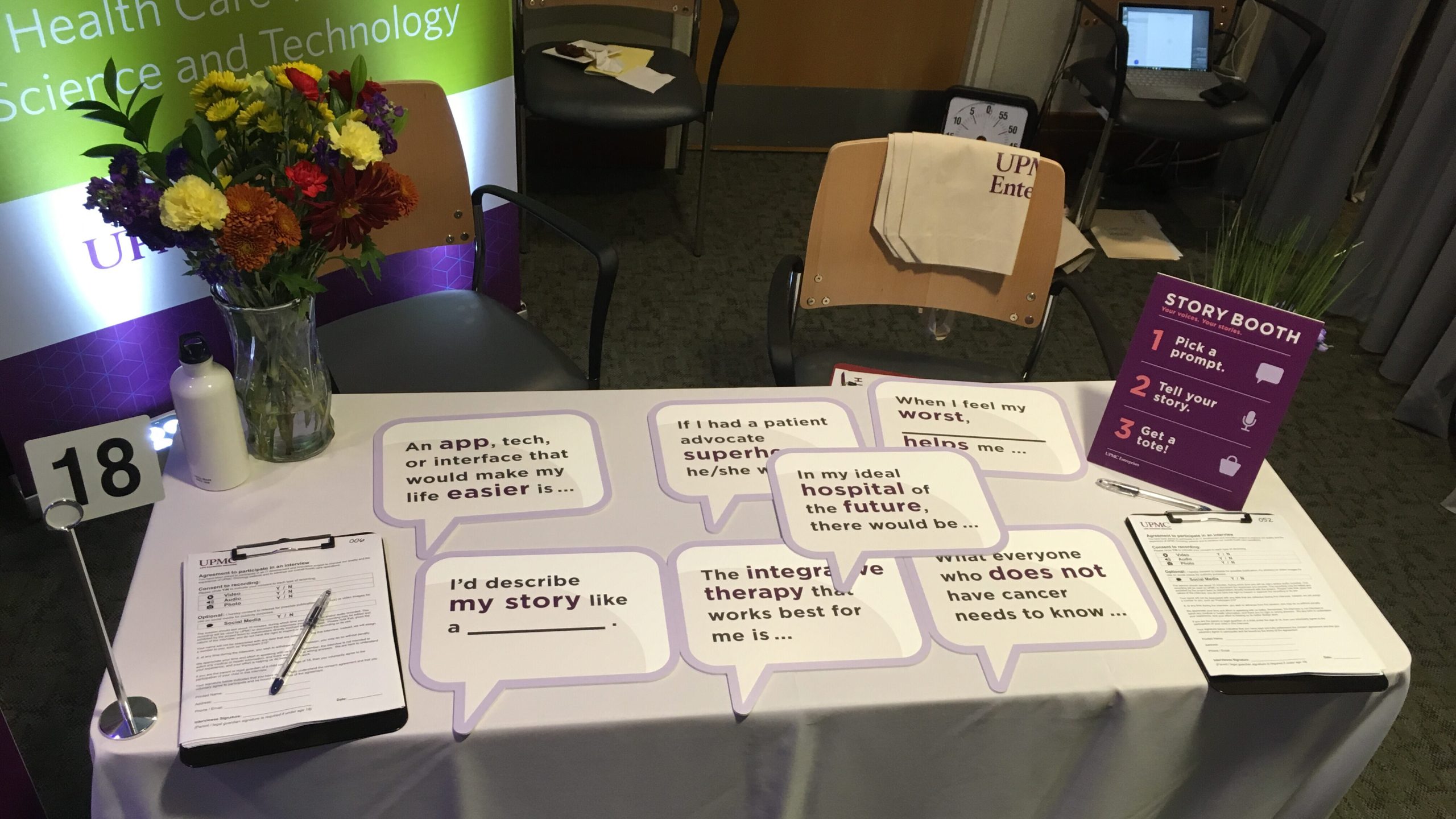
Gretchen Mendoza, Director of Product Management at UPMC Enterprises and one of the strategists behind the Storybooth at Hillman, is a proponent of HCD in health care.
“Human-centered designers are not motivated simply by the way something looks, but by how it works, and why it works that way,” Mendoza said. “They are driven by understanding and advocating for the users of whatever they’ve been charged with making.”
Listening to oncology patients, grouping feedback into themes – known as “affinity clustering” – analyzing the data, and searching for insights that can help define features of a new hospital is an example of design research being applied to health care innovation at UPMC.
It also is the work of designers at Enterprises. Designers are usually embedded within product teams at Enterprises, including MyUPMC, ParlaiQ, GE Next Generation Imaging (NGI), and Vincent.
While many designers come from a visual design background, some, like UPMC Enterprises Senior Designer Shannon Balke, hail from the sciences. Balke started her career in biomedical engineering working on medical devices. When she felt a pull toward “the human side of the problem,” she dove into a Masters of Interaction Design program at Carnegie Mellon University and transitioned to a career in UX design.

For Balke, working on UX in health care innovation at UPMC Enterprises means solving problems that profoundly impact people’s quality of life.
“By applying design thinking and human centered design principles to the problem-solving process, we can draw upon our human empathy and creativity to create experiences that are central to core human needs, and deliver seamless, intuitive, and delightful experiences in contexts where it really matters,” Balke said.
UPMC Enterprises designers have access to the UPMC health care ecosystem, which helps them get to know and understand their end user. UPMC Enterprises Senior Designer Ally Reeves supports NGI by developing products to improve the radiology workflow. Reeves explained the importance of frequent, cyclical contact with UPMC clinicians: “As a designer, you need to get in the shoes of your user — if that person went to medical school for 12 years and works in a unique environment, that can be difficult to do. So it’s really important to check back and not assume we have an analogous experience,” Reeves said.
That ability to check in with end users helps teams ensure they are building products that solve for the problem, and that the product works for the user. Frequent engagement is an opportunity to recalibrate with the customer, and, if needed, revise a feature or product before moving too far down the line.
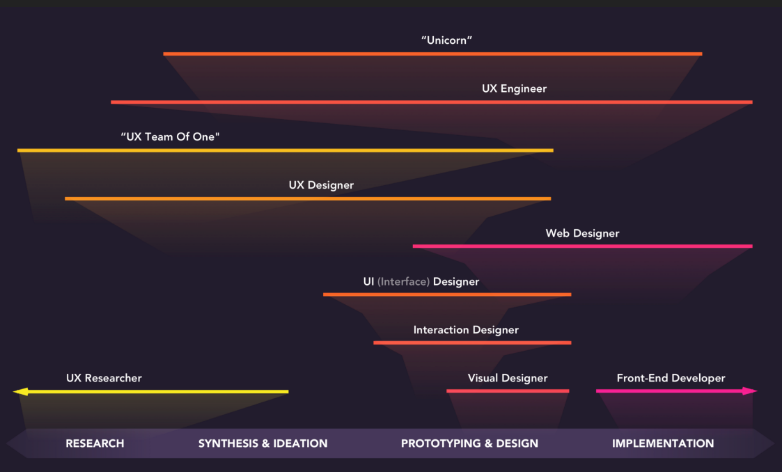
“In some companies, you’re not able to test features with end users until you’ve built an entire dashboard. At UPMC, we have the opportunity to ask the end user about parts of that dashboard,” Reeves said.
There are numerous roles and activities within UX and other types of design. Research is just one component of Human-Centered Design and can take many forms — including storybooths, surveys, facilitated workshops, fly-on-the-wall observation, and more. Research can be the end of a designer’s role in a project, or the jumping off point for involvement. Storyboarding, mapping service flows, creating concepts or wireframes, drafting a strategic approach, or even writing code and building the first version of a product are all functions of a UX designer, though most specialize in specific areas.
Designers who implement HCD and UX utilize scientific processes and hard skills, but HCD is also an inclusive philosophy—and it complements UPMC Enterprises’ mission to create health care innovations that impact the lives of patients in meaningful, lasting ways.

